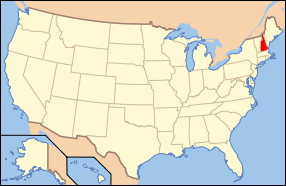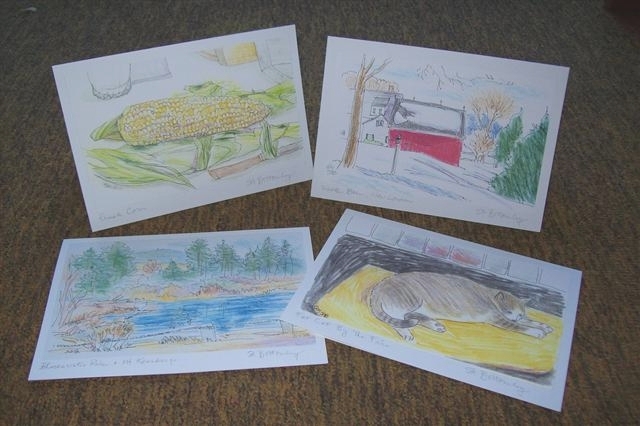 We now have a very fine atlas of our state. This allows us to find some of the small villages, plus locate the commercial centers of some larger ones. Last week, when driving along farther north, I drove through two towns and never did find the settled areas, so that won't happen again. The atlas is 3/4 of an inch thick and has 148 double page maps and an index 55 pages long. Every street in the state!
We now have a very fine atlas of our state. This allows us to find some of the small villages, plus locate the commercial centers of some larger ones. Last week, when driving along farther north, I drove through two towns and never did find the settled areas, so that won't happen again. The atlas is 3/4 of an inch thick and has 148 double page maps and an index 55 pages long. Every street in the state!
I feel odd using the word ‘town’ when the settlement may have 1,000 or fewer people in it. (Some even zero!) But that is the nomenclature of New England. You are always within the borders of a town, even if you are in the wilderness. Am I making any sense? When we lived in Maryland, it took us a while to get used to being in no town, but always in a county.
 It was a very rainy day here yesterday in New London, described in the news as a rare summer Nor’easter. We thought we would go for a drive, to draw, despite the poor weather. Our town is located on a mountain ridge and it often has rain, sleet, hail, or snow when the surrounding towns do not. But yesterday it was rainy everywhere. So how do you draw in the rain? Through a window of a house, or in a sheltered doorway, or from a car. I drew from the car, looking between the raindrops. My husband, the driver, had to do some fancy maneuverings to get the car in exactly the best position for the just right composition. This building is the Hall Library in Northfield NH, shared with the town of Tilton. I do so love late Victorian tour de force brick edifices! Such a combination of masterful solidity and frivolity with a dash of brio.
It was a very rainy day here yesterday in New London, described in the news as a rare summer Nor’easter. We thought we would go for a drive, to draw, despite the poor weather. Our town is located on a mountain ridge and it often has rain, sleet, hail, or snow when the surrounding towns do not. But yesterday it was rainy everywhere. So how do you draw in the rain? Through a window of a house, or in a sheltered doorway, or from a car. I drew from the car, looking between the raindrops. My husband, the driver, had to do some fancy maneuverings to get the car in exactly the best position for the just right composition. This building is the Hall Library in Northfield NH, shared with the town of Tilton. I do so love late Victorian tour de force brick edifices! Such a combination of masterful solidity and frivolity with a dash of brio.
As with many buildings of this era, there is a new addition out the back. That way it doesn’t spoil the looks of the original architecture. And this one was done in a tasteful and harmonious fashion.
 This is in Boscawen, a small town just north of the capital city of Concord. I felt like drawing the fire station in the center, with its brick tower, built for drying hoses and to provide a home for the fire bell at the top. Next to it on the right is mill housing. Any long building of that era with multiple doors was probably built as housing for mill workers. The square building on the left was most likely a boarding house.
This is in Boscawen, a small town just north of the capital city of Concord. I felt like drawing the fire station in the center, with its brick tower, built for drying hoses and to provide a home for the fire bell at the top. Next to it on the right is mill housing. Any long building of that era with multiple doors was probably built as housing for mill workers. The square building on the left was most likely a boarding house.
The Merrimack River is at the bottom of the hill behind the trees. It was the engine that powered industry in the major cities of New Hampshire and northeastern Massachusetts. There were flour mills, textile mills, a tannery, and probably more types of mills too, such as lumber mills. As far as I know, all those here are closed and now abandoned. We drove around down by the river, and we saw no signs of renewal there.
The town center is located a few miles to the northwest. It’s more like the downtown of a New Hampshire country village. Among the offerings there is the best source of genuine southern barbecue that we’ve found since we moved here from Maryland.



















